 Who'd want to kill a child? On occasion, virtually any parent on the planet, but in this case it's a violent psychopath. 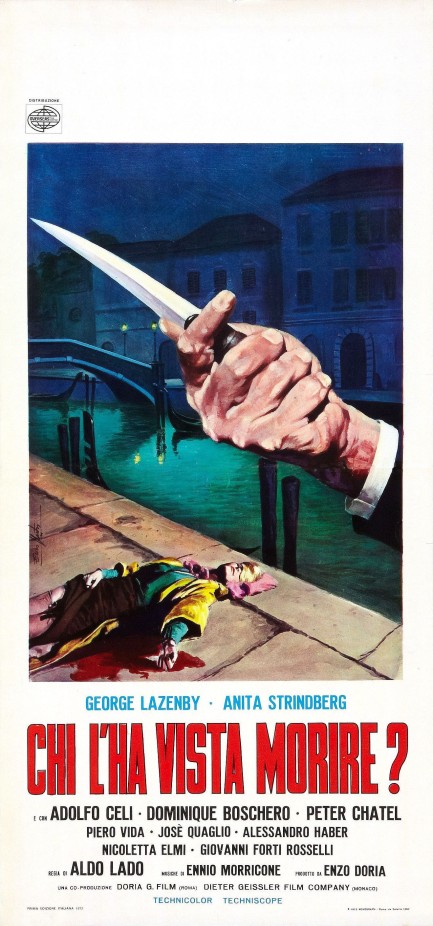
This poster was painted by the great Enzo Nistri (the brush behind classic promos such as this and this) for the giallo flick Chi l'ha vista morire?, known in English as Who Saw Her Die? It stars former James Bond lead George Lazenby (looking unhealthily thin here because for reasons inexplicable he lost thirty-five pounds for the role) as an American artist in Venice whose young daughter goes missing. He first appeals to the (pro forma ineffectual) police, but the girl turns up floating dead in the Grand Canal.
This brings Lazenby's estranged wife Anita Strindberg to town for the funeral, and soon they're asking questions about a child murder from the previous year, which we the viewers have seen in the opening reel being committed by a woman clad and veiled in black. Lazenby and Strindberg go full sleuth in order to identify and locate this suspected killer, who meanwhile graduates to knocking off adults who might have clues. You may assume co-star and former Bond villain Adolfo Celi has something to do with all this, and he might, but this is a giallo. There's no way to know who's the killer until the final reveal.
The movie's real star may be Venice, where residents once sauntered easily through lanes uncluttered by tour groups and AirBnB renters. You'll see many hidden nooks of the city, beautifully shot by director Aldo Lado and cinematographer Franco Di Giacomo. This type of scenery will come courtesy of AI image generators in the approaching years. After all, why close down St. Mark's Square when you can render it in a computer? Take heart, though—even a computer will never be able to generate Anita Strindberg. Chi l'ha vista morire? premiered in Italy today in 1972.
 Reaching the highest pleasure. 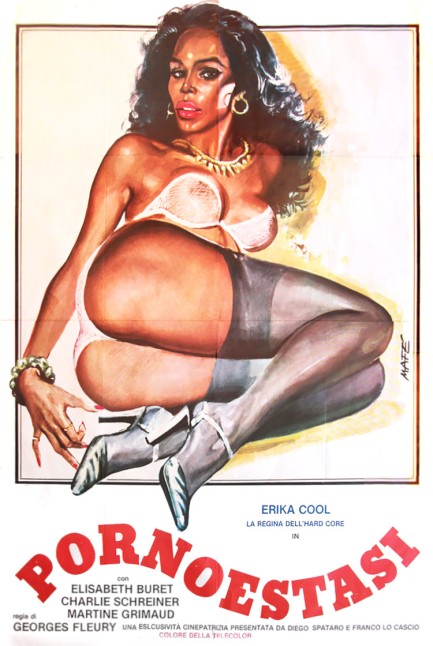
Time flies. We've always reminded ourselves to get back to the Italian artist who signed his work as Mafé, but seven years passed. Well, we have him today, better late than not at all. Above you see his poster for the French made sex flick Pornoestasi, which starred Erika Cool, Marilyn Guillame, Élisabeth Buré, and Martine Grimaud, and was originally titled Tout est permis, or “everything is allowed.” Mafé created other nice pieces, several of which you can see by clicking his keyword below.
We had a glance at Pornoestasi, and what you get is a typically clumsy xxx production from the era, poorly scripted and shot, in which a couple who run a clothing boutique together are experiencing some doldrums. The man decides he needs time away from the woman, she agrees, and both take the opportunity to experience new partners. The funny part is that “away” means a hotel in the same town. We'd at least go to Antibes or Saint-Tropez. In any case, Pornoestasi is nothing to write home about. It premiered today in 1977.
 Harlem hath no fury like a righteous man scorned. 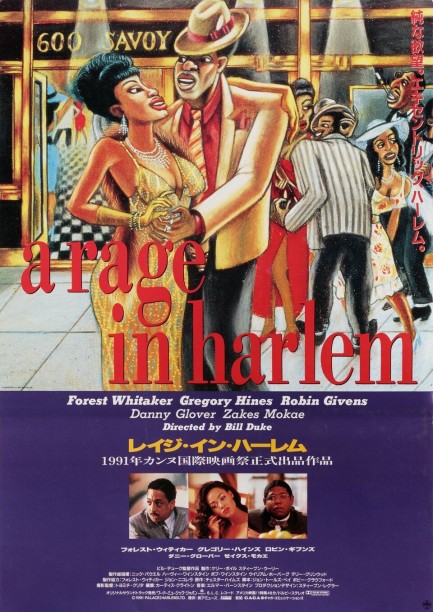 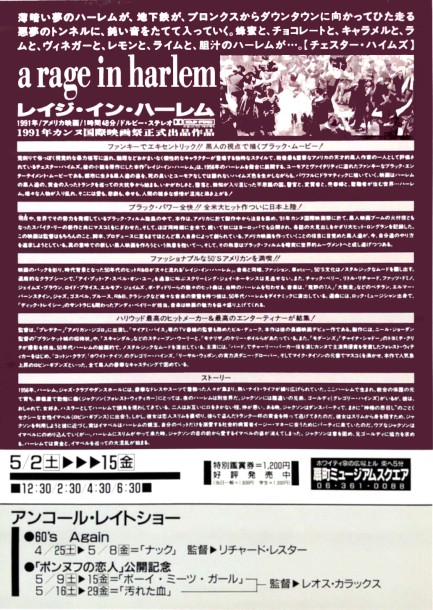
This Japanese poster for the 1990s period crime drama A Rage in Harlem happened to catch our eye, partly because the art by Joe Batchelor is great, but also because we knew the American promo featured not this painting but a rather banal group photo of the cast. We don't know why Japan got the better promo, but we can speculate. By this time global audiences were acclimated to photographic promo art, but in Japan the cast—Forest Whitaker, Robin Givens, and several established actors of the period—were unknown to local filmgoers, so the distributors marketed the movie as an art film, a sort of exotic trip to 1950s Harlem. The text on the poster's reverse seems to confirm that: 1956, Harlem. Jazz clubs, dancehall dresses, and people in suits, with a nightlife unfolding in a Harlem-style destination.
Chester Himes' novel For Love of Imabelle provided the source material, and it features everything the poster promises. The story deals with a naive and religious young Harlem undertaker played by Whitaker who's taken in by scam artists, tries to retrieve his money, but runs into an array of complications, some of them comical, most of them lethal. The movie follows the book pretty closely, which means it's bound to have good moments, but the direction by Bill Duke is a bit ponderous in the early stages, the script's many interjections of humor lack the zest of Himes' writing, the soundtrack is often a mismatch of mood, and the entire production suffers from budgetary constraints. It wasn't shot in New York City, but rather Cincinnati. While architecturally that made sense because Cincinnati has scores of brownstone houses in the style of old Harlem, there's really no substitute for the Big Apple.
On the plus side, the cast is interesting. Whitaker would later become a respected Hollywood figure, though here he's a little green, still feeling his way as an actor. Danny Glover, Bajda Djola, and Gregory Hines are entertaining in supporting roles. Givens fits the part of a femme fatale like a glove—which is to say, she's slinky as hell and startlingly beautiful. And turning back to the setting, while, as we said, Cincinnati is no Harlem, the many brownstone apartment houses did create a workable backdrop, and Duke uses the city in every advantageous manner he can manage. These are enough attractions, we think, to push the movie onto the plus side of the ledger. After its 1991 U.S. run A Rage in Harlem reached Japan in 1992. The rear of the poster gives a premiere date of May 2.
 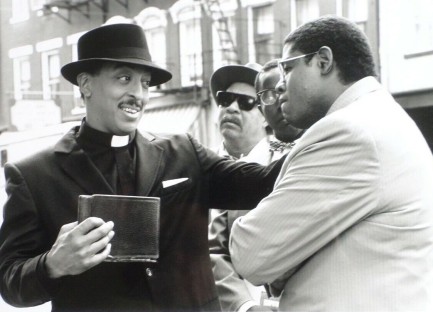 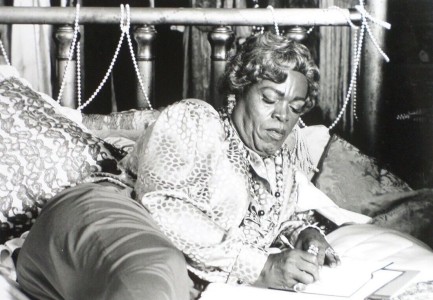  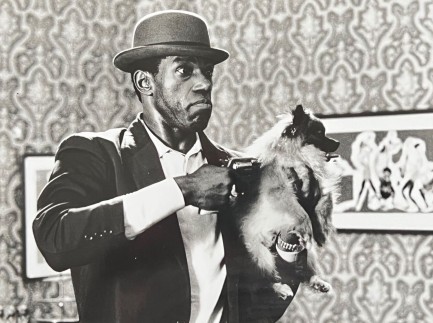    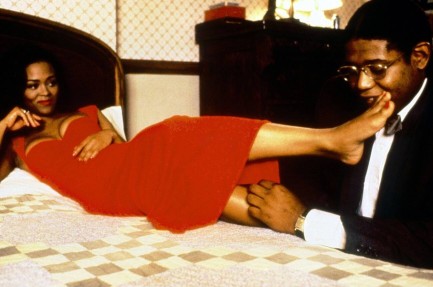 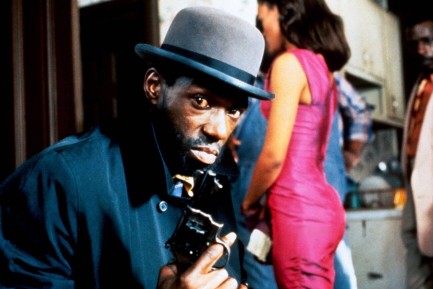  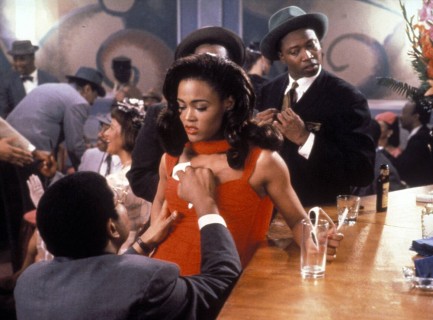 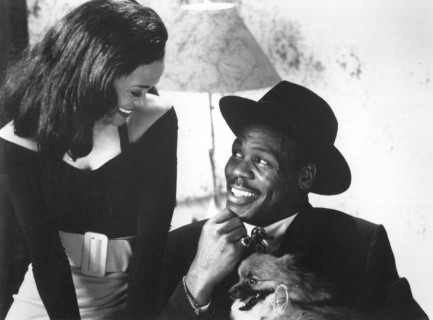  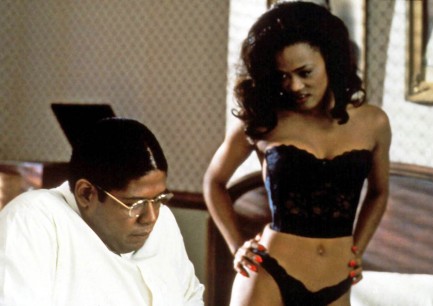 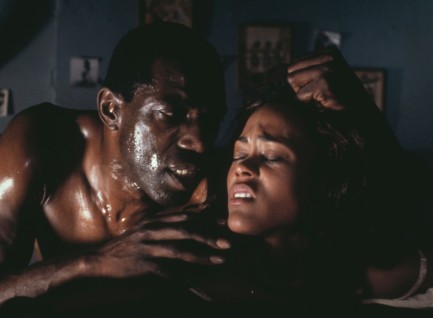 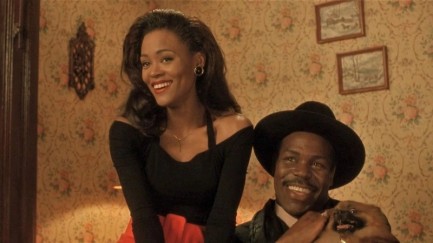 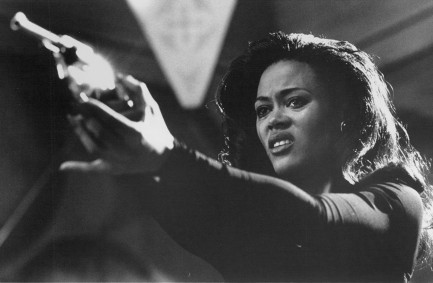  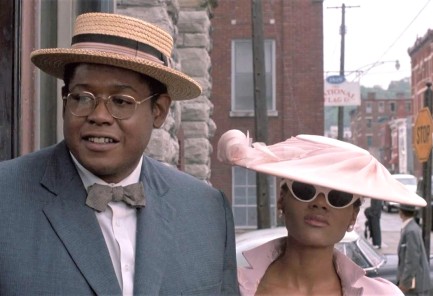 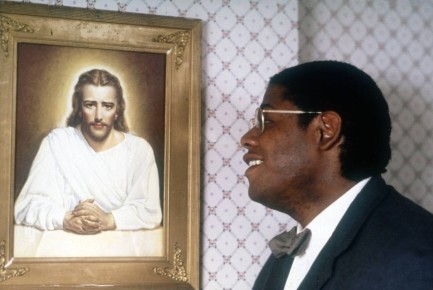
 Joan is in her sweet spot with a challenging film role. 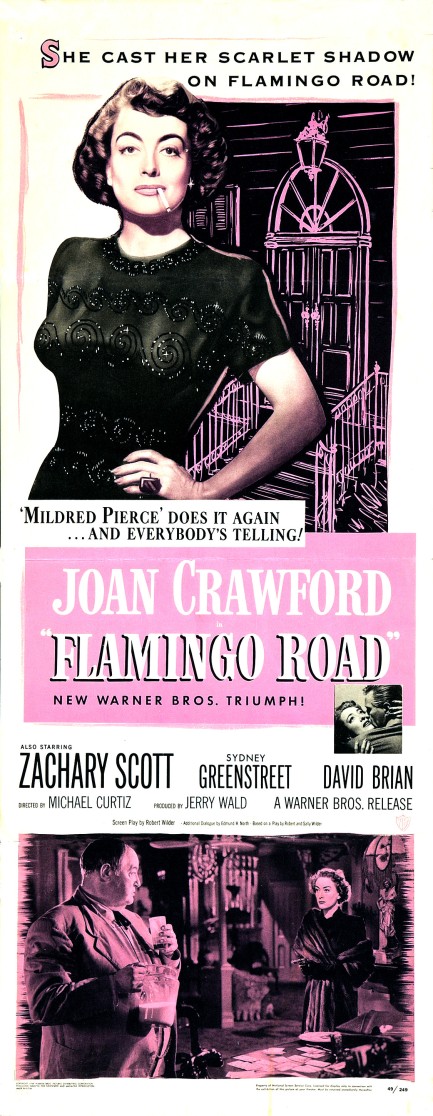
How do you judge a great acting performance? One way is when beforehand you look at the performer and the part and say, “Impossible, doesn't fit, can't possibly work,” then it does. Flamingo Road, which premiered in the U.S today in 1949, features Joan Crawford as a carny performer and it doesn't fit. But probably nobody would seem to fit. The main character evolves over years from carny chippie into upper crust lady, so either way a filmmaker would have to make a difficult choice—cast an ingenue who evolves into a sophisticated middle-aged woman, or cast a mature actress and hope she can play young. They chose the later option with Crawford, and it can't possibly work. But this is Crawford we're talking about—she could make most any role work, and does so here with a typically assured performance.
Flamingo Road is set in the American south and is about the social mores and political machinations of a small but wealthy town. The title refers to the enclave where the rich and powerful live together in their mansions and manors. The carny version of Crawford falls for local deputy sherrif Zachary Scott, but he's been tabbed by local kingpin Sydney Greenstreet to be his puppet in the state senate. As part of that plan Scott is to marry into wealth. Cavorting with a carny isn't going to fly. Greenstreet decides to break them up, or hurt Crawford trying, and there's nothing so underhanded or injurious that he won't do it. Crawford, though, is tougher than anyone expects, and what she learns from her travails is, first: she's going to make it to Flamingo Road no matter what it takes; and second: she will have her revenge. That's all we'll tell you about the plot.
Flamingo Road is another of those movies that's often called a film noir, and while we don't try to be gatekeepers of what is and isn't noir—because we have no authority to do so—we also don't avoid stating the obvious. Flamingo Road isn't a film noir. Some entities, including respected ones, have a vested interest in casting the noir net as widely as possible. If you host noir festivals, for example, after a while you need to expand your defintion of noir to keep your slate fresh. If you write film noir books, you might want to demonstrate that you think outside the box by including Chinatown or Lat sau san taam or The Limey (all excellent movies, by the way).
At the opposite extreme, several prominent critics attest that film noir doesn't exist at all. That's like saying there's no such thing as superhero movies because costumed heroes are just further iterations of superpowered characters such as Rambo. Superhero movies exist. So does film noir, though it resides within the wider genres of crime and drama. However, it's too easy to call any movie with conflict and a few neon-splashed night sequences a noir. Film noir is as much thematic as it is iconographic. In every way that we can discern, Flamingo Road isn't one. The definitive American Film Institute calls it a melodrama. We agree. It's a melodrama in which a good actress, aged north of forty, overcomes difficult casting to knock her years-spanning role out of the park.
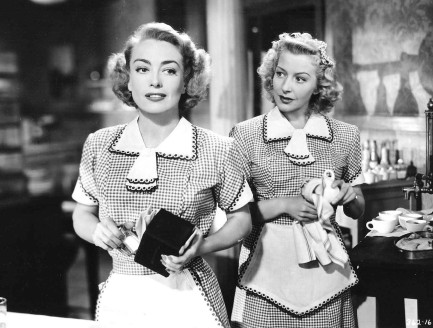  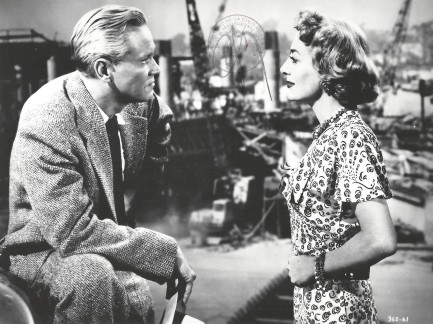 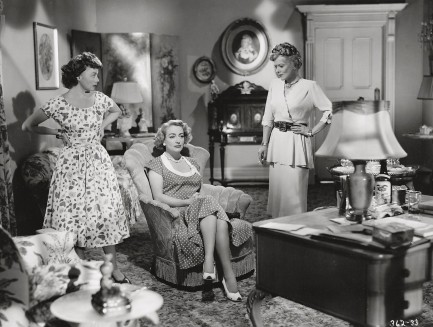 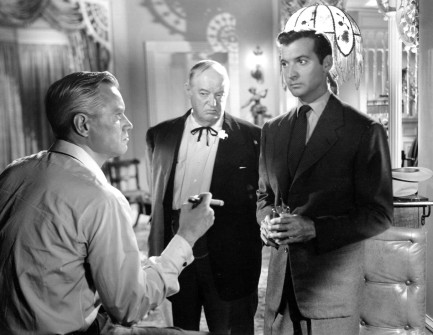 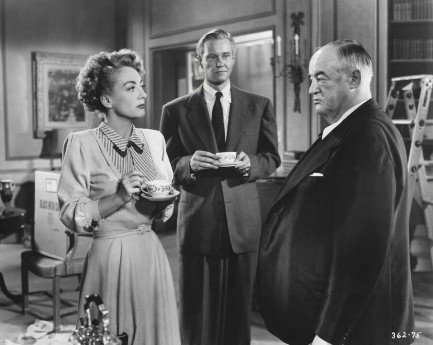 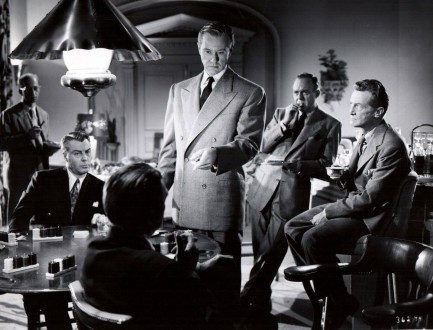 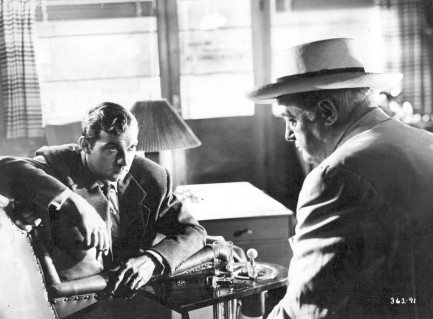 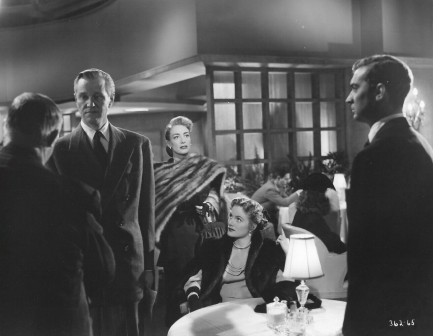  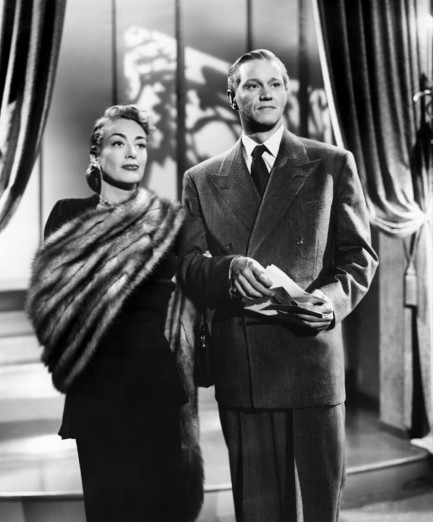  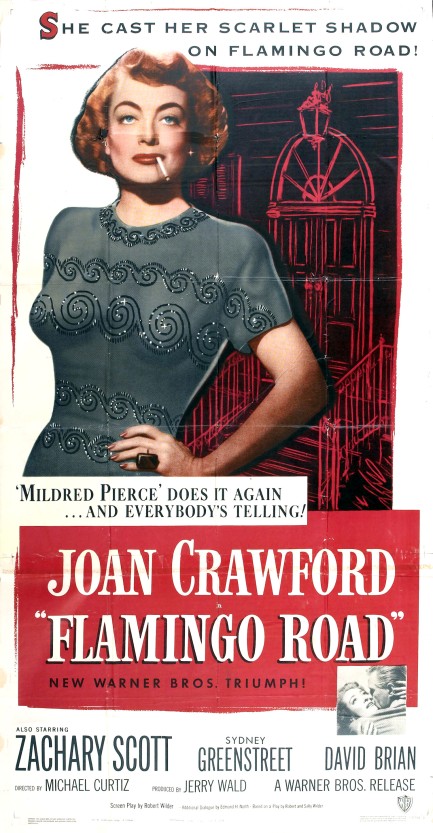
 Every top notch private investigator knows the best clues are found in bed. 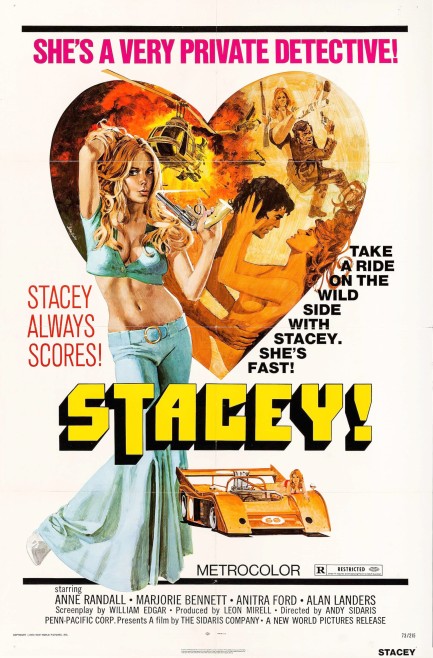
We wanted to show you another poster painted by John Solie, who was responsible for numerous blaxploitation, sexploitation, and action promos, all executed at the extremely high level you see here with his one sheet for Stacey. His other notable efforts include those for The Arena, Star Crash, Hit Man, and Hollywood Boulevard. You can click his keywords at bottom to see everything we've shared from him.
Naturally we watched Stacey and it's a cheesy detective tale starring erstwhile Playboy centerfold Anne Randall, who plays a model-turned-private dick hired to investigate a rich woman's extended family before any of them are allowed to be included in her will. Randall arrives just in time for intrigue and murder. Private investigators need to possess a Class C license in order to legally take on clients. The C on Randall's license probably stands for “casual sex.”
Even so, there's not much here. The detective elements are uninspiring despite a noir style voiceover, and the sexual elements, even with Randall and co-star Anitra Ford in occasional undress, are not going to blow your skirt up. To put the overall nothingness of the movie in perspective, consider the fact that we couldn't find a copy with sharp enough resolution to make screenshots worthwhile, nor enough official production photos to make them worth sharing. That's how much of a historical afterthought it is.
In lieu of imagery you could use your imagination, but we recommend not bothering. Stacey resides at the low end of grindhouse cinema characterized by numerous bold and outrageous entries. In our opinion it's notable only for being the first exploitation effort by director Andy Sidaris, who would go on to helm boobalicious ’80s throwaways such as Malibu Express, Hard Ticket to Hawaii, and Savage Beach. Stacey premiered in the U.S. this month in 1973.
 We recommend that you keep your distance—from the movie. 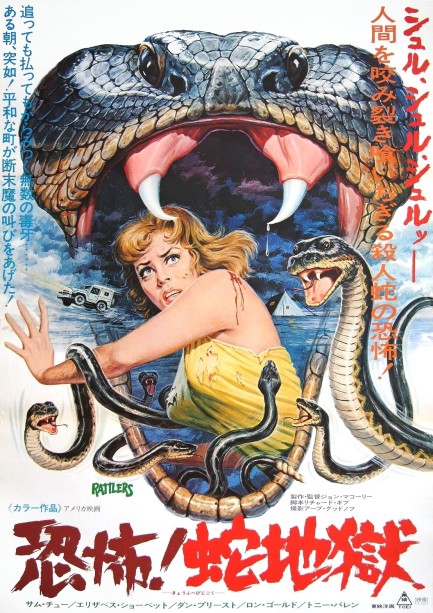
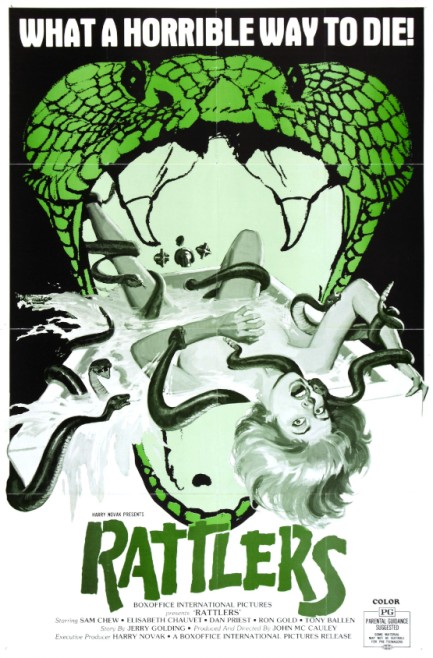 Japanese posters for U.S. film productions are sometimes so good we forget that the movies might not be. Case in point: the above poster was painted by the famed Japanese artist Seito, who was behind promos for films like Star Wars and Flesh Gordon. He produced this for the horror movie Rattlers, which premiered in the U.S. today in 1976 and reached Japan on an indeterminate date sometime afterward. The Japanese title is to the point:恐怖!蛇地獄means “Horror! Snake Hell.” The movie is its own special hell. It's about a bunch of rattlesnakes that run wild, and it's sssssssssssssssso bad. University of California herpetologist Sam Chew figures out how to deal with the offending reptiles, with the help of intrepid reporter Elisabet Chauvet, but nobody figured out how to deal with a bad script, a weak director, and a zero-charisma lead. You can let this one slide. Japanese posters for U.S. film productions are sometimes so good we forget that the movies might not be. Case in point: the above poster was painted by the famed Japanese artist Seito, who was behind promos for films like Star Wars and Flesh Gordon. He produced this for the horror movie Rattlers, which premiered in the U.S. today in 1976 and reached Japan on an indeterminate date sometime afterward. The Japanese title is to the point:恐怖!蛇地獄means “Horror! Snake Hell.” The movie is its own special hell. It's about a bunch of rattlesnakes that run wild, and it's sssssssssssssssso bad. University of California herpetologist Sam Chew figures out how to deal with the offending reptiles, with the help of intrepid reporter Elisabet Chauvet, but nobody figured out how to deal with a bad script, a weak director, and a zero-charisma lead. You can let this one slide.
 When there's a killer on the loose you'd better sleep with one eye open. 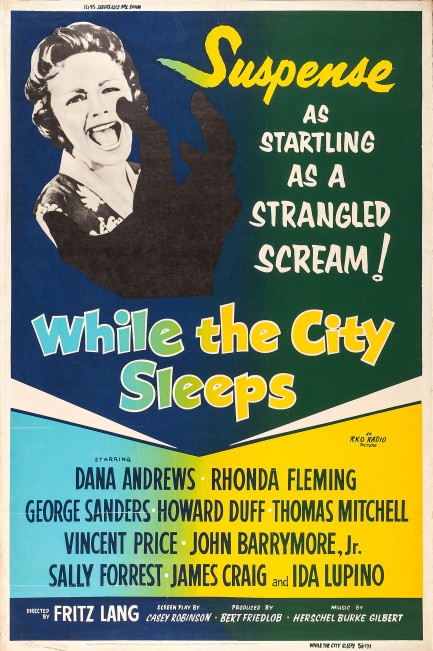
This poster for While the City Sleeps doesn't impress with masterly art the way so many vintage promos do, but its simplicity is, in an oblique sort of way, we think, meant to echo tabloid covers from the era. RKO made a special poster in collaboration with Confidential magazine, which you'll see below. The movie's plot is pure tabloid fodder. A serial killer has slain women in New York City, leaving the cryptic message “Ask mother,” written on the walls of one murder scene. Vincent Price, owner of Kyne News Service, part of a media empire comprising ten newspapers, a wire service, and other interests, offers the position of executive director to three employees in order to draw them into cutthroat competition with each other. Soon it becomes clear that finding the identity of the “lipstick killer” is the winning move. Intrigue and subterfuge take over the office. Everyone gets involved, from senior editors to stringers to gossip columnist Ida Lupino, but the killer is too clever to be caught.
At least until intrepid Pulitzer Prize winning television reporter Dana Andrews airs a scornful and taunting broadcast, deliberately setting up his own fiancée as bait. He doesn't even ask her permission. Well, he does, but only after arranging to publish their engagement announcement in the New York Sentinel right next to a story about the killer. Reckless? Yes. Presumptuous? For sure. There are intertwined plotlines here, but Andrews using his true love as a lure was the most interesting aspect for us. He isn't the only heel on display. The movie is ostensibly about a serial killer, but is really a framework for exposing backbiting and cynical ambition in the big city. Director Fritz Lang, in what was his penultimate U.S. film, explores the cruel banality of what, these days, some call “hustle culture,” and brings the production to a conclusion that's, in the words of Thomas Mitchell's character, “Neat, but nasty.” Our words are: a mandatory watch. While the City Sleeps had a special world premiere today in 1956. 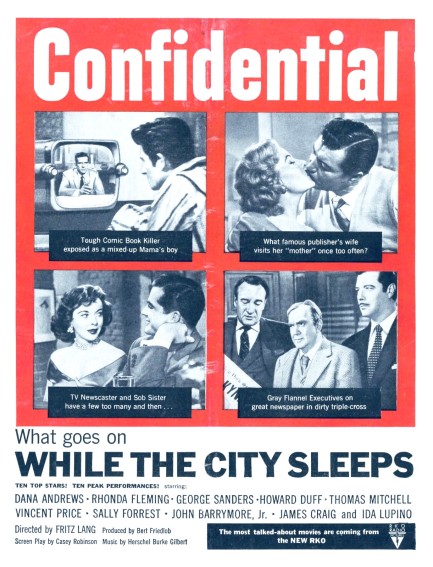 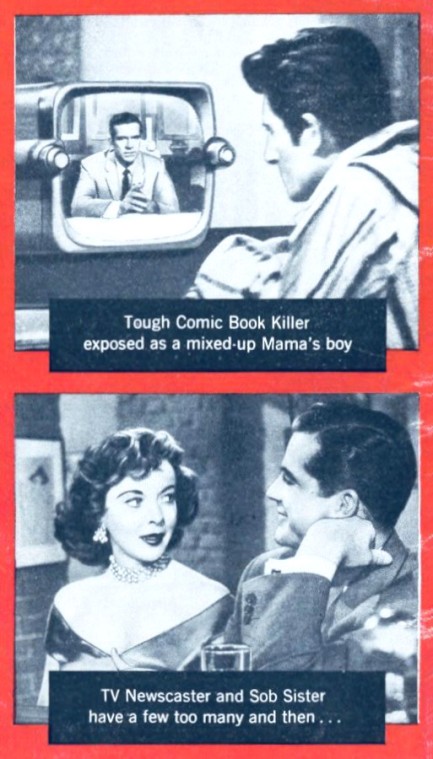 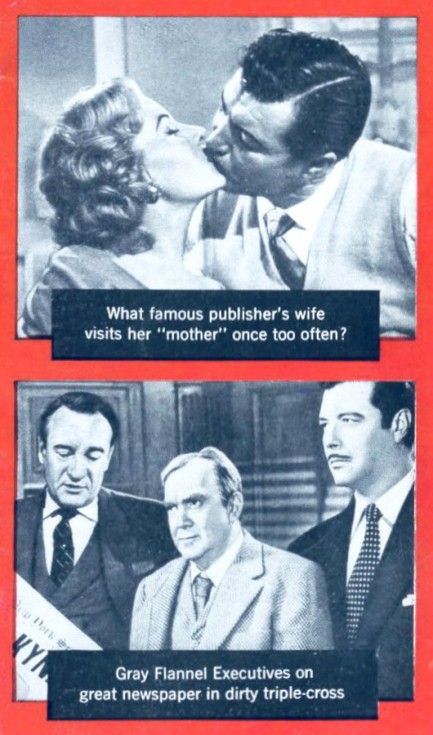  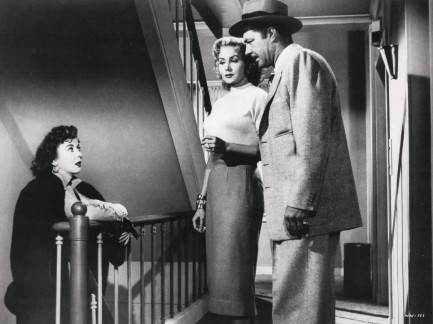 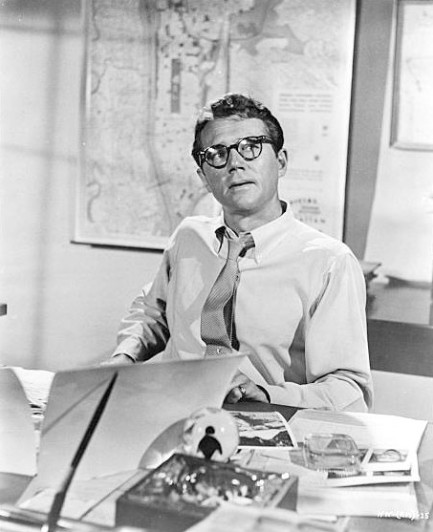  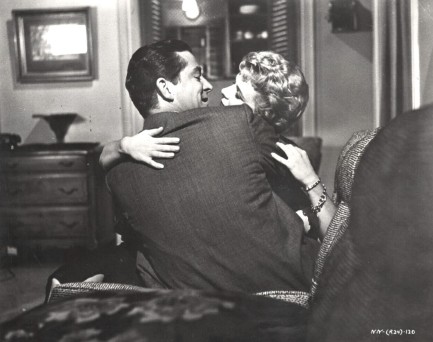 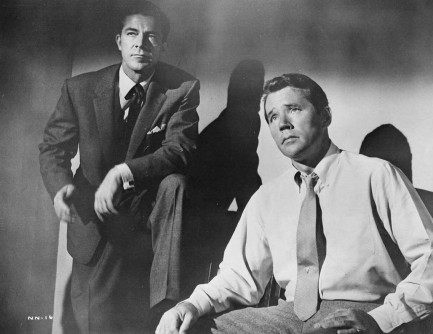 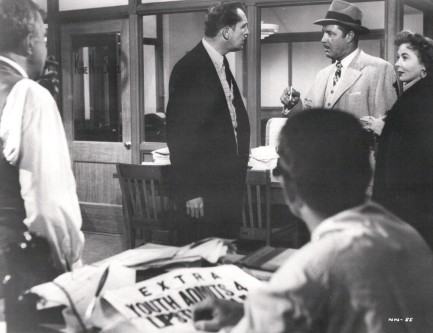 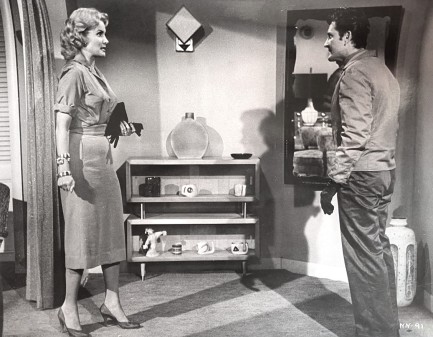 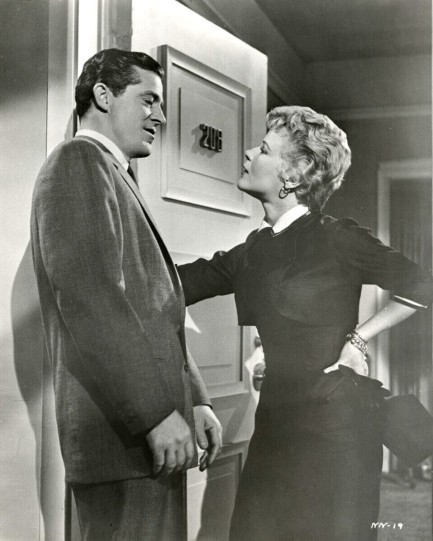 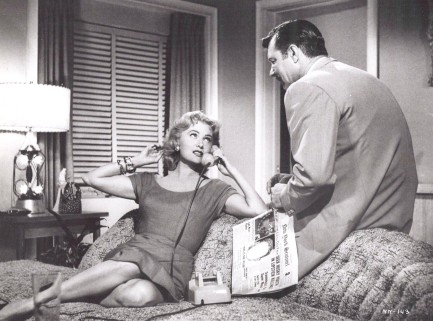 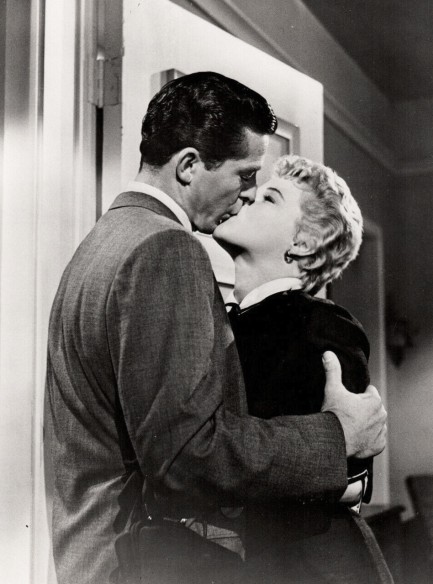 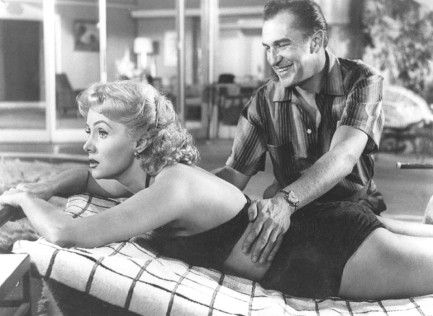 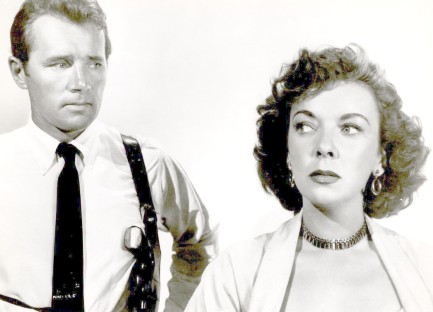  Edit: Vintage movies are excellent windows into bygone customs and practices. There's a great moment in this one. Rhonda Fleming and James Craig are chatting in her apartment late one night when the doorbell unexpectedly buzzes. They look at each other confused for a second, then Fleming says, “It's probably the drugstore. That was the last bottle of Scotch.” Edit: Vintage movies are excellent windows into bygone customs and practices. There's a great moment in this one. Rhonda Fleming and James Craig are chatting in her apartment late one night when the doorbell unexpectedly buzzes. They look at each other confused for a second, then Fleming says, “It's probably the drugstore. That was the last bottle of Scotch.”
You know, there were a lot of things wrong with the mid-century era. But there were a few things right too. Getting the all-night drugstore to deliver booze has to be one of the most right things we've ever heard of, so we give thanks to While the City Drinks—er Sleeps—for clueing us in, and suggest you call your congressional rep immediately and ask for a law allowing pharmacies to deliver alcohol. If not for yourself, do it for the children.
 No appeal, no parole, no mercy, no hope. 
Today we continue our journey through ’70s exploitation cinema with Jackson County Jail, churned out of the grindhouse factory known as New World Pictures. Plotwise, Yvette Mimieux plays a Los Angeles advertising exec who leaves her cheating husband and finds herself at loose ends, but manages to score a job from a friend in New York City. She decides to get there by driving cross country, but passes through fictional Jackson County, located somewhere in or around Texas (a geographical fact we learn from a news broadcast that provides a Dallas Cowboys update). She's railroaded into jail and raped by the cop working the graveyard shift. Afterward, Mimieux manages to brain him with a stool and escapes with the help of hardened criminal Tommy Lee Jones, who early in his acting career (and with that monobrow of his) was already capable of making lines like this sing: “There's nothing wrong with being a crook. Everybody's crooked. I never met a straight person in my whole life. Whole goddamn country is a rip-off. And everybody in it.”
Jackson County Jail is sometimes labeled a women-in-prison flick, but it's a bit different for a generally low rent sub-genre because Mimieux was an established star, thirty-four years old with more than twenty movies behind her. The credibility she lends the film changes little about its basic purpose—titillation mixed with violence and an indictment of hick culture. Simultaneously, though, the filmmakers definitely don't go to the extremes of other women-in-prison dramas, in which we've seen women hung up by their hair. There are some viewers, we suspect, who wouldn't consider this movie a women-in-prison flick at all. We're fine leaving it out of the conversation too. The jailbound portion lasts barely twenty minutes of what is perhaps more of an outlaw movie, complete with Jones letting fly with this response to being told the police will kill him: “That don't matter. I was born dead.” Whether women-in-prison, outlaw, or counterculture, that's a damned good line. And Jackson County Jail is a pretty good movie. It premiered today in 1976
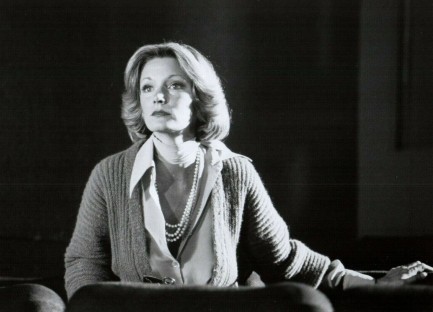 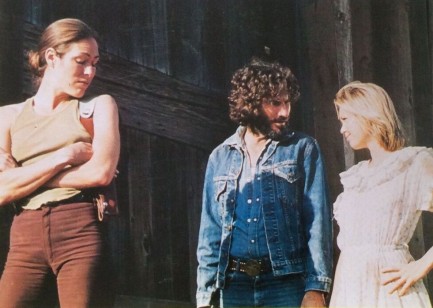 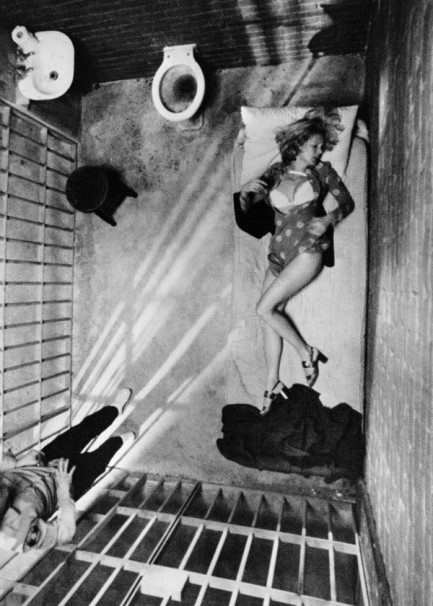    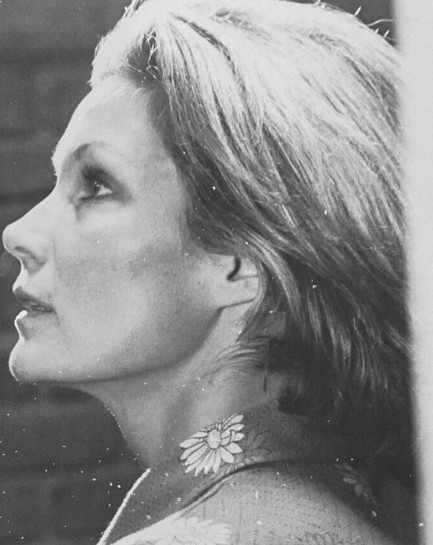 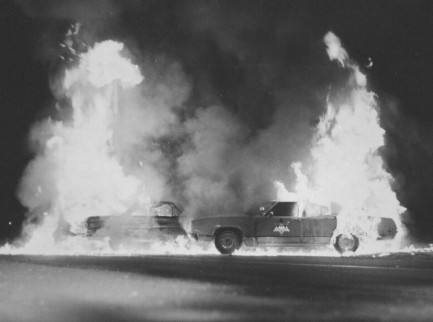 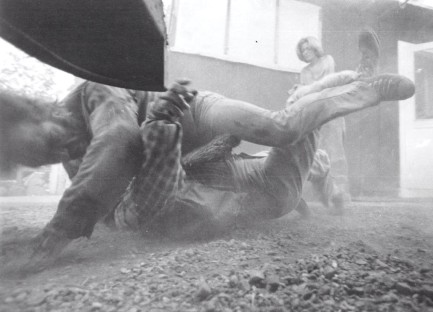 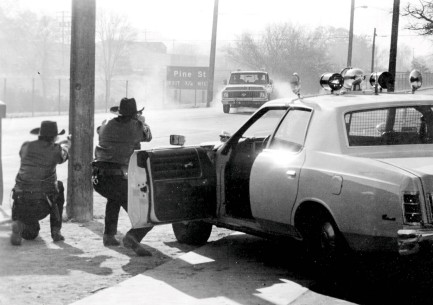 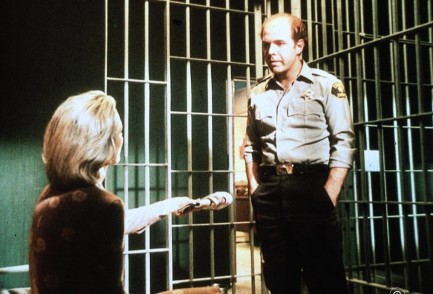
 Vince waxes philosophical and discovers the secret of life—death. 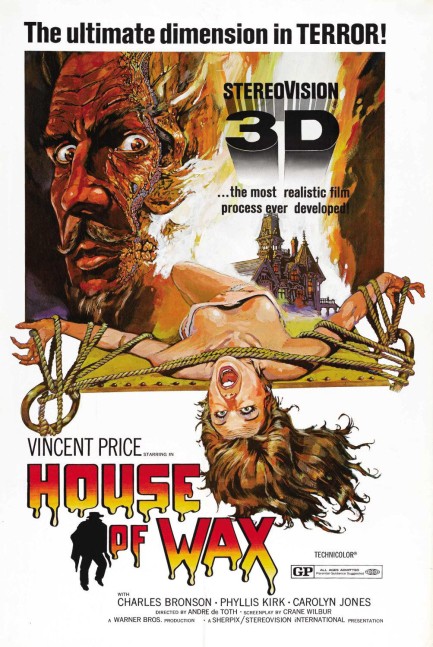
House of Wax, which was produced by Warner Brothers and premiered today in 1953, was the first 3D production by any major studio. It's a period piece set in Victorian New York City starring Vincent Price as the creator and half owner of a historical wax museum. Unfortunately, his focus on history leaves the public nonplussed, and his partner Roy Roberts, who needs capital, sets the place aflame for the insurance money. Price is burned and driven insane. Well, actually he was insane before the fire, but in a cute way. He talked to his wax figures and thought they talked back.
But after the fire he's a barking psychopath, running around nighttime Gotham behatted and cloaked like Lamont Cranston. His goal? Revenge, of course, a craving solved early in the proceedings when he pitches Roberts down an elevator shaft with a rope around his neck. But what next? What does one do once vengeance is thine? Well, you build a new wax museum, except this time you surrender to prurient tastes and create displays of modern murder and the macabre. Screw that high-minded history crap.
Everything goes fine until Phyllis Kirk begins to suspect that the extraordinary realism of the wax figures is due to more than just artistic talent. Her suspicion is a screenwriter's concoction—there's no way a person could realistically make the leap Kirk does in believing Price guilty of heinous crimes. The script literally calls it a woman's intuition. Well, okay. But in our experience that's a myth, and it's possibly even insulting when used as substitute for intelligence, so maybe just put a realistic clue in the script and write Kirk's character as very smart instead. In any case, she's definitely nosy as hell, and that's the beginning of the end for vicious Vince.
House of Wax has many things going for it. The sets and costumes are extravagant, the early fire sequence with its melting wax figures is genuinely unsettling, the WarnerColor developing process is attractive, and the acting is uniformly competent, even by that six-foot three-inch Hillshire Farms ham Price. And it's fun to watch Charles Buchinsky, aka Charles Bronson, as the mute assistant Igor. In the end the House of Wax works. Add popcorn, a few friends, and about of case of beer and you'll have a great Saturday night. 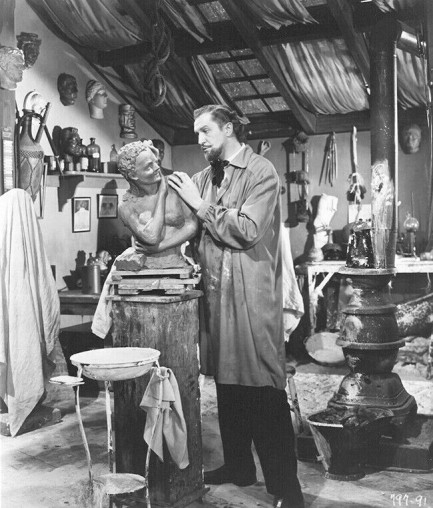 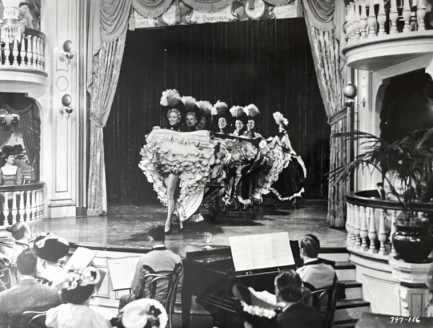 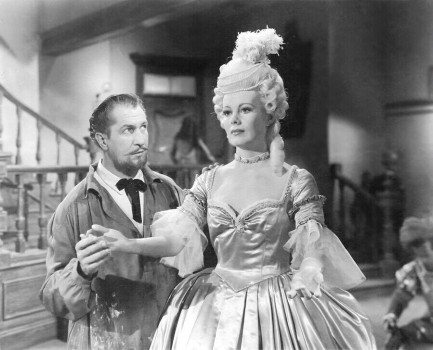 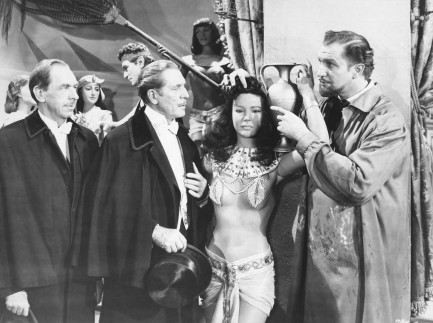 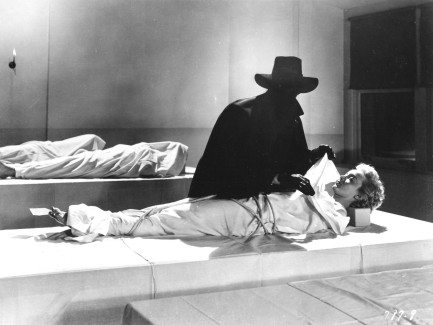 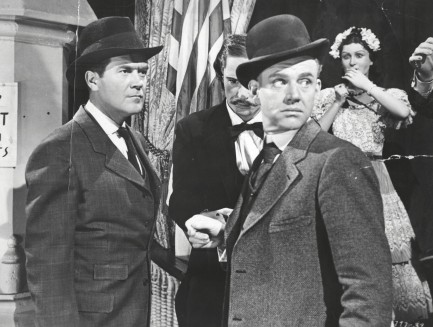 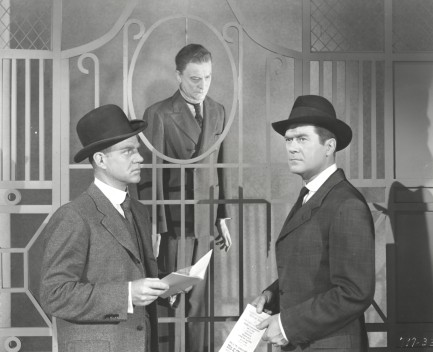  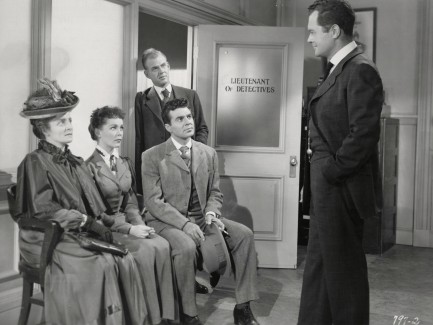 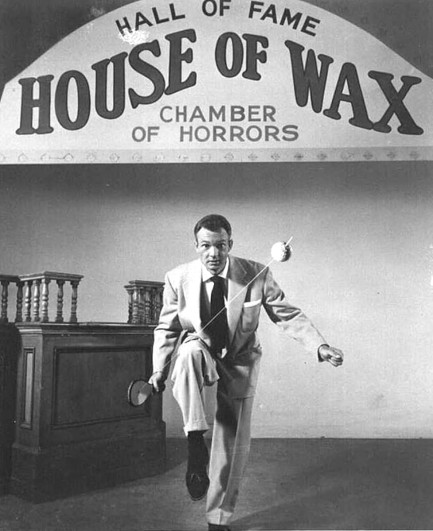 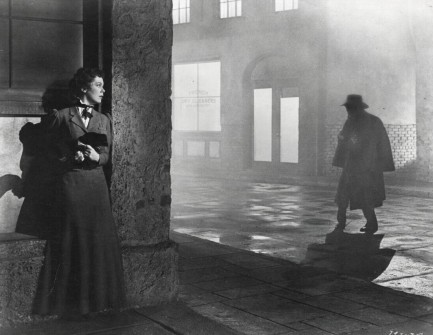 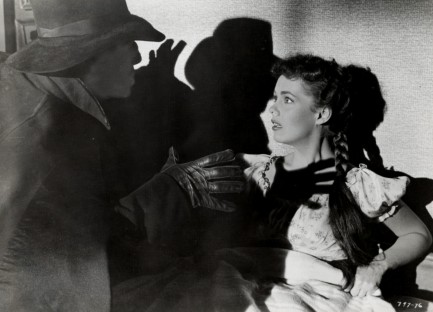 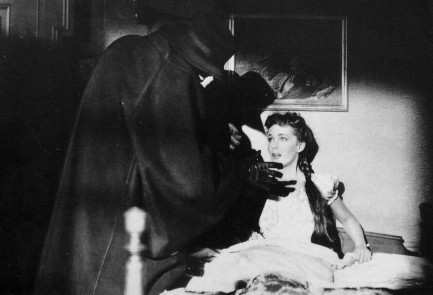 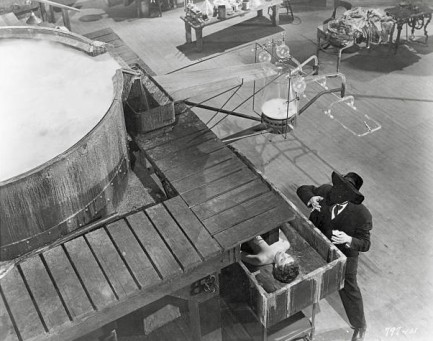 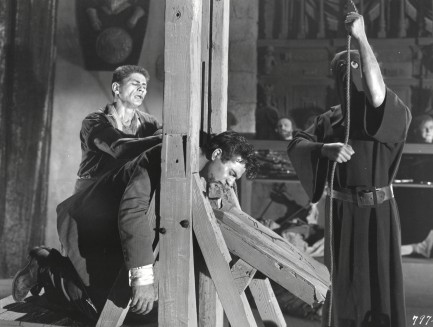  
 The lone stranger rides again.  
We usually watch movies in the order we're able to acquire them, so as a matter of availability we ended up watching parts one and three in the Rika the Mixed Blood Girl trilogy without having seen the middle entry. Last night we remedied that and screened part two, Konketsuji Rika: Hitoriyuku sasuraitabi, known in English as Rica 2: Lonely Wanderer. You see a rare tateken style poster for the film above—along with a nice zoom—that you won't find anywhere but on Pulp Intl. We already expounded upon the change in spelling of Rika's name in the English title a while back. Shorter version: we don't know why Rica makes more sense than Rika. Probably it doesn't. Take it up with the honchos at Kindai Eiga Kyokai.
Rika 2/Rica 2 stars Rika Aoki and she's once again required to right wrongs, as she escapes from the frying pan of reform school and lands in the fire of urban crime and other hazards endemic to pinku cinema. The main plot involves a ship that exploded and sank in Misawa harbor, and a survivor—Rika's friend Hanako—who's in a mental hospital as a result. But Hanako is mentally fine. She's actually hiding in the one place hired killers can't reach her. Turns out the ship was yakuza owned, and everyone who survived is being hunted down. Rika goes to the police and demands an investigation, but the cops are yakuza owned too. Why must everyone who survived the ship disaster be killed? How high does the conspiracy go?
Rika handles her business with moral outrage and violence, but she also has time for a musical number or two. She's the Dylan of the Misawa nightclub district. Check out her lyrical stylings:  
As with the other films, some of the action in Rika 2/Rica 2 veers into slapstick. Also like the other films, there are racial and political digressions, and they aren't subtle. For instance, when Rika and a friend are accosted by Americans at one point, the group consists of one cowboy, one hippie, one guy dressed in a suit, etc. Later Rika is told point blank that it's lucky she's half white, because being half black like her friend Hanako would make her even more inferior to anyone fully Japanese. These are villains talking to her. The movie's default setting is anti-racist, which of course is correct and moral, but it's funny how what's considered racist evolves over time. Hanako is played by Japanese actress Masami Souda in shoe polish and an afro wig. Oops! For pinku cinema, it's just another day. But all-in-all, a reasonably fun one. Konketsuji Rika: Hitoriyuku sasuraitabi premiered in Japan today in 1973.
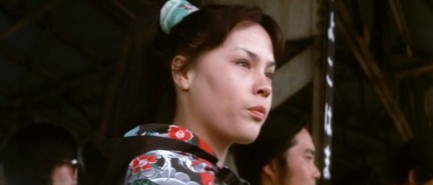     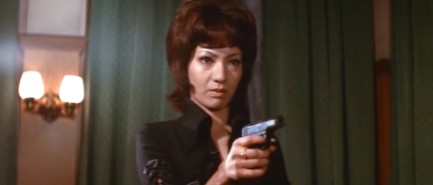 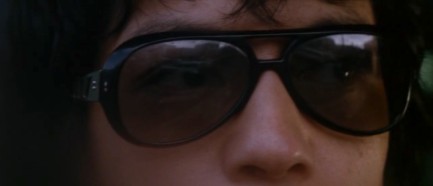  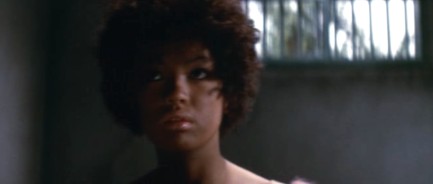  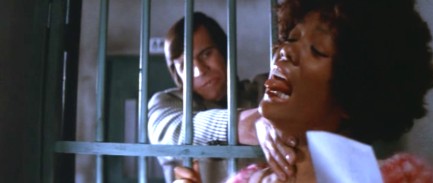 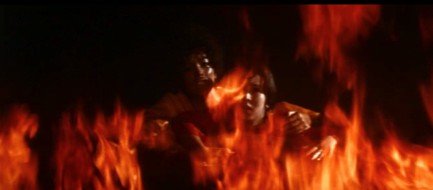    
 |  |
|
 |

The headlines that mattered yesteryear.
2003—Hope Dies
Film legend Bob Hope dies of pneumonia two months after celebrating his 100th birthday. 1945—Churchill Given the Sack
In spite of admiring Winston Churchill as a great wartime leader, Britons elect
Clement Attlee the nation's new prime minister in a sweeping victory for the Labour Party over the Conservatives. 1952—Evita Peron Dies
Eva Duarte de Peron, aka Evita, wife of the president of the Argentine Republic, dies from cancer at age 33. Evita had brought the working classes into a position of political power never witnessed before, but was hated by the nation's powerful military class. She is lain to rest in Milan, Italy in a secret grave under a nun's name, but is eventually returned to Argentina for reburial beside her husband in 1974. 1943—Mussolini Calls It Quits
Italian dictator Benito Mussolini steps down as head of the armed forces and the government. It soon becomes clear that Il Duce did not relinquish power voluntarily, but was forced to resign after former Fascist colleagues turned against him. He is later installed by Germany as leader of the Italian Social Republic in the north of the country, but is killed by partisans in 1945.
|

|
|

It's easy. We have an uploader that makes it a snap. Use it to submit your art, text, header, and subhead. Your post can be funny, serious, or anything in between, as long as it's vintage pulp. You'll get a byline and experience the fleeting pride of free authorship. We'll edit your post for typos, but the rest is up to you. Click here to give us your best shot.

|
|


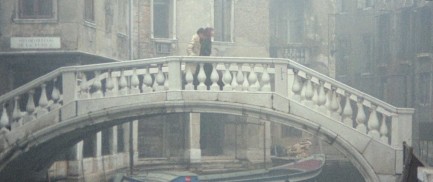




























































 Japanese posters for U.S. film productions are sometimes so good we forget that the movies might not be. Case in point: the above poster was painted by the famed Japanese artist Seito, who was behind promos for films like Star Wars and Flesh Gordon. He produced this for the horror movie Rattlers, which premiered in the U.S. today in 1976 and reached Japan on an indeterminate date sometime afterward. The Japanese title is to the point:恐怖!蛇地獄means “Horror! Snake Hell.” The movie is its own special hell. It's about a bunch of rattlesnakes that run wild, and it's sssssssssssssssso bad. University of California herpetologist Sam Chew figures out how to deal with the offending reptiles, with the help of intrepid reporter Elisabet Chauvet, but nobody figured out how to deal with a bad script, a weak director, and a zero-charisma lead. You can let this one slide.
Japanese posters for U.S. film productions are sometimes so good we forget that the movies might not be. Case in point: the above poster was painted by the famed Japanese artist Seito, who was behind promos for films like Star Wars and Flesh Gordon. He produced this for the horror movie Rattlers, which premiered in the U.S. today in 1976 and reached Japan on an indeterminate date sometime afterward. The Japanese title is to the point:恐怖!蛇地獄means “Horror! Snake Hell.” The movie is its own special hell. It's about a bunch of rattlesnakes that run wild, and it's sssssssssssssssso bad. University of California herpetologist Sam Chew figures out how to deal with the offending reptiles, with the help of intrepid reporter Elisabet Chauvet, but nobody figured out how to deal with a bad script, a weak director, and a zero-charisma lead. You can let this one slide.

















 Edit: Vintage movies are excellent windows into bygone customs and practices. There's a great moment in this one. Rhonda Fleming and James Craig are chatting in her apartment late one night when the doorbell unexpectedly buzzes. They look at each other confused for a second, then Fleming says, “It's probably the drugstore. That was the last bottle of Scotch.”
Edit: Vintage movies are excellent windows into bygone customs and practices. There's a great moment in this one. Rhonda Fleming and James Craig are chatting in her apartment late one night when the doorbell unexpectedly buzzes. They look at each other confused for a second, then Fleming says, “It's probably the drugstore. That was the last bottle of Scotch.”



























































































































